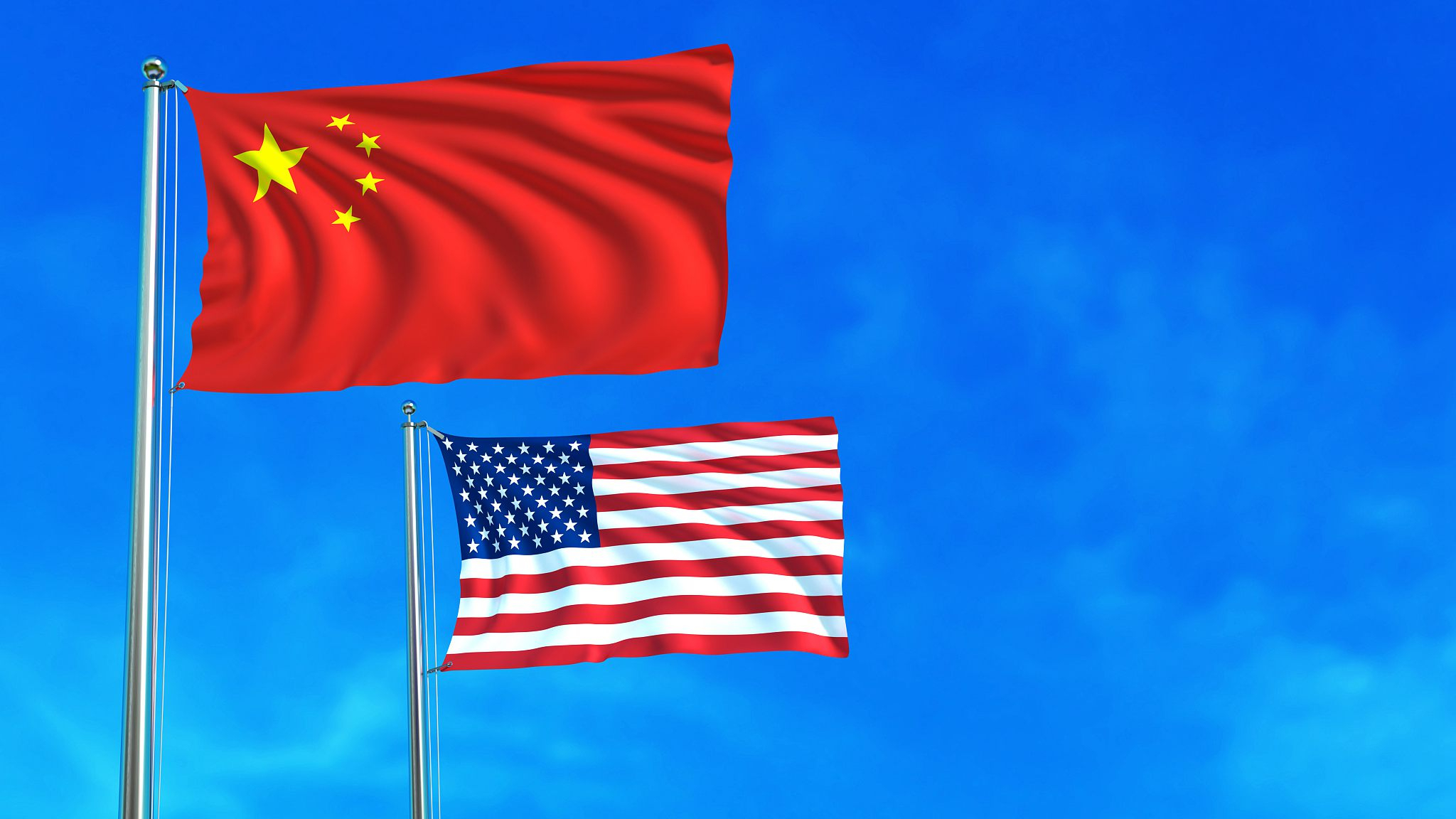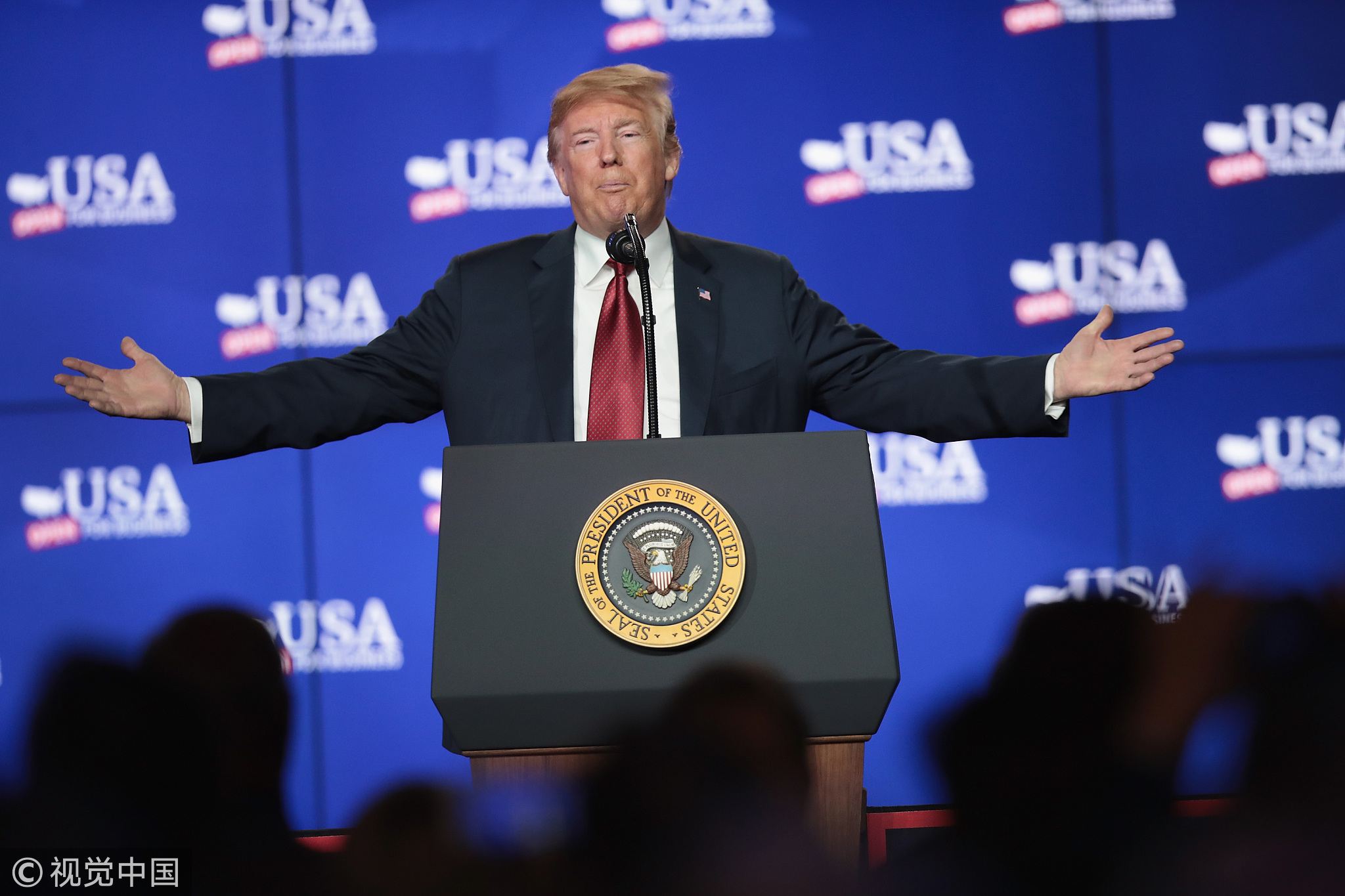
Opinions
12:41, 21-Dec-2018
Opinion: A prediction on future Sino-U.S. relations
Updated
11:33, 24-Dec-2018
Ken Moak

Editor's note: Ken Moak taught economic theory, public policy and globalization at the university level for 33 years. He co-authored a book titled "China's Economic Rise and Its Global Impact" in 2015. The article reflects the author's opinion, and not necessarily the views of CGTN.
It would seem a U.S.-China “showdown” might be looming in 2019 and beyond, given recent U.S. stepping up of anti-China rhetoric and policies: Charging Chinese nationals in 'extensive' global hacking campaign by the U.S. Department of Justice on December 20.
Canceling the Intermediate-Range Nuclear Forces Treaty (INF) with Russia is said to be about bringing China into the nuclear weapons reduction narrative and treaty. Increasing the 2019 defense budget to over 750 billion dollars is said to “bring China (and Russia) to their senses (whatever that means). Pressuring Canada into arresting Meng Wanzhou, Huawei's chief financial officer on the same day as the two countries' presidents reached a 90-day truce to end the trade war might be meant to stop or slow down China's innovation drive. Escalating tensions in the South China Sea is meant to entrap the Asian giant into a response in kind, creating an excuse for more defense spending.
The motive behind the provocation
The motive seems clear, growing at an average annual rate of 9 percent for four decades has afforded China not only the ability to challenge U.S. hegemony but might also surpass America's economic and technological prowess. That thought “scares” the political establishment because of the high stakes involved. For example, if the Chinese yuan is able to replace or even at an equal footing with the greenback, American power and influence would fizzle. It is the U.S. dollar's reserve currency status that affords America “endless” power because it can print as much money as it wants.

U.S. President Donald Trump speaks to guests during a groundbreaking ceremony for the 10 billion U.S. dollars Foxconn factory complex in Mt. Pleasant, Wisconsin, U.S., June 28, 2018. /VCG Photo
U.S. President Donald Trump speaks to guests during a groundbreaking ceremony for the 10 billion U.S. dollars Foxconn factory complex in Mt. Pleasant, Wisconsin, U.S., June 28, 2018. /VCG Photo
For example, if a creditor wants to be repaid, all the U.S. government has to do is to print the amount of the repayment since the greenback is a universally accepted medium of exchange and settlement of debt. Indeed, it is its “right” to print money that affords America to become the forefront of innovation and advanced weapons development and production. In short, America spends, the world pays.
Further, China's economic rise could erode U.S. currency hegemony, rendering sanctions ineffective. The Asian economic powerhouse is the largest or second largest trade partner to over 120 countries, according to the World Trade Organization.
The fact of the matter was never in the wildest dreams of the West and Japan that China could be capable of challenging U.S. global dominance. Having China as a “peer power” is bad enough, the prospect that it might supplant Western and Japanese supremacy is unthinkable and therefore must be stopped.
Timing of U.S. escalating tensions
The timing of escalating tensions against China might not be coincidental, the 2020 presidential election is just around the corner. Decades of being “brainwashed” by media's anti-China rhetoric, the majority of Americans are led to believe the Asian power is “evil”. That sentiment is reinforced by China making much of the products America used to produce.
To that end, most Americans do think China has stolen their jobs and closed factories, it did not matter that “hollowing out” American manufacturing was a business decision. Presidential candidates for both political parties exploited the “fake news” as Trump did during the 2016 presidential campaign.
To be fair, Trump was not the only presidential candidate played the “China card”, although he is probably the most “vocal”. Bill Clinton accused George H.W. Bush of “coddling to tyrants”, a reference to the Chinese leadership. But Clinton made a “U-turn” on US-China relations, making a rapprochement” with China. George W. Bush labeled China a “competitor”, suggesting the Asian giant competing with the U.S. for global influence.
The 2020 presidential election campaign would be no different, candidates from both major parties will play the anti-China treat rhetoric to the hilt. Trump would be “tough”, imposing additional tariffs, ratcheting up tensions in the South China Sea, etc.
Inventing or exaggerating the “China threat” will continue
No longer able to ridicule it, the U.S. anti-China crowd resort to inventing “fake” or “sensationalized” news to “badmouth” it. For example, the American analyst Richard Pillsbury accused China of using “Fu Manchu evil” deeds to supplant American dominance (i.e. luring former President Richard Nixon into a U.S.-China rapprochement) in his book, The Hundred Year Marathon.

Former U.S. President Richard Nixson shakes hands with a Chinese businessman in Guangzhou, south China, April 13, 1993. /VCG Photo
Former U.S. President Richard Nixson shakes hands with a Chinese businessman in Guangzhou, south China, April 13, 1993. /VCG Photo
Pillsbury's “devious” theory is based on the assumption that the Chinese play Go, a game he said use devious means to defeat an opponent. Funny he did not brush the Japanese in the same light because the game is also popular in Japan. Pillsbury also did not mention why Go resorts to devious measures while chess is a game of strategy.
In supporting his theory, Pillsbury argued that former U.S. President Richard Nixon was “tricked” into a U.S.-China rapprochement. But he ignored the fact that Nixon had planned for a rapprochement two years before he visited.
The anti-China narrative would continue and intensify. The latest is the U.S. accusation that the Chinese government is “sponsoring” cyber hacking, charging two Chinese intelligence officers.
A final comment
U.S.-China relations could dive further in the next year or two, but both sides would not fall into the “Thucydides Trap”, a scenario in which an existing power using military means in preventing a rising one from challenging it or vice versa for two reasons. First, both the U.S. and China are nuclear powers, capable of destroying each other (and the world). Second, the two economies are increasingly intertwined, needing each other to sustain long-term economic growth and stability.
(If you want to contribute and have specific expertise, please contact us at opinions@cgtn.com)

SITEMAP
Copyright © 2018 CGTN. Beijing ICP prepared NO.16065310-3
Copyright © 2018 CGTN. Beijing ICP prepared NO.16065310-3